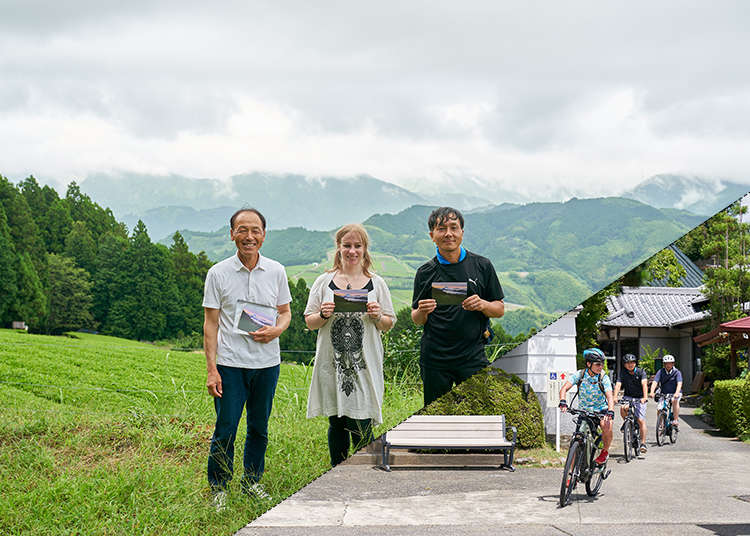
Shizuoka Prefecture can claim one of Japan’s most impressive landmarks, Mount Fuji, an honor it shares with its neighbor, Yamanashi Prefecture. Just a short bullet-train ride from Tokyo, Shizuoka is a popular destination for a weekend getaway. There, the ocean breeze and a cup of famous Shizuoka green tea will refresh you and get you in the mood to explore!
For this cycling adventure, Tobu Tours kindly guided us around Shizuoka Prefecture's most scenic spots on this fun bike route. We were even lucky enough to stay overnight at a Buddhist temple!
Shizuoka City Tourist Bicycle Network Council: Rent a Bicycle for Only 500 Yen per Use
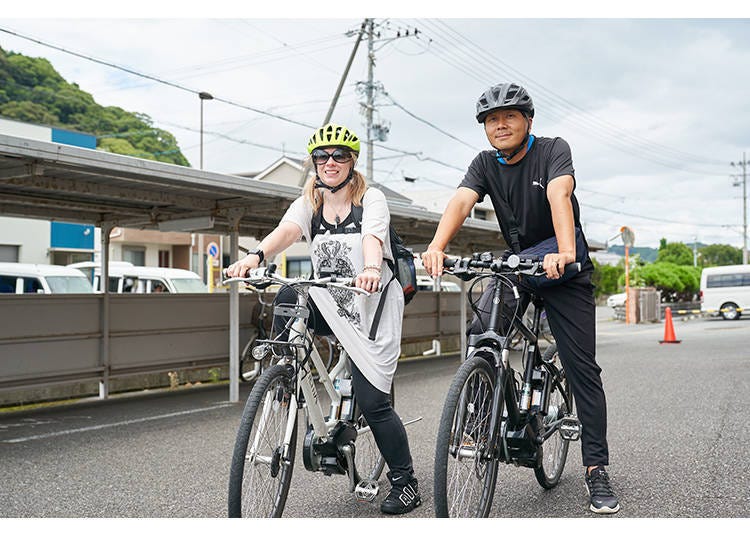
We set off on our adventure by bike. The Shizuoka City Tourist Bicycle Network Council offers e-bike rentals for only 500 yen per use. The usage period depends on the rental place, but thanks to the bikes being electronically assisted, you can cover a surprising amount of distance with very little effort!
On this tour, we were hitting around 2-3 hours of cycling per day, which was balanced nicely with all the sightseeing.
Seikenji Temple: Architect of Japan, Tokugawa Ieyasu’s Favorite Temple with a Scenic View of Shizuoka
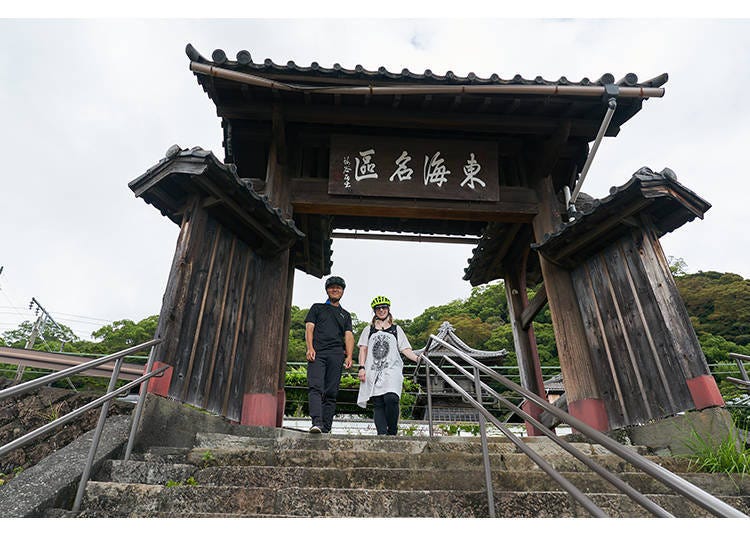
After setting off, it was about 30 minutes to our first stop, Seikenji Temple, which was founded in the seventh century. Formerly one of the ten most prominent temples in Japan, Seikenji today remains known only to Japanese history buffs.
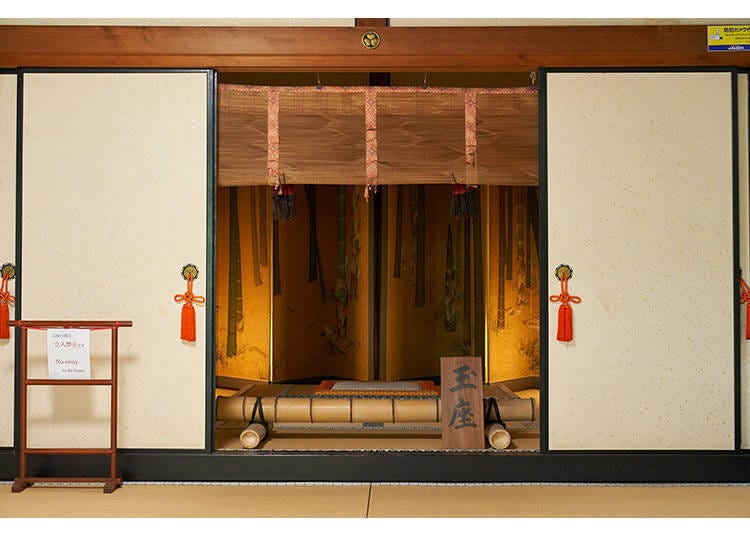
Five hundred years ago, the Imagawa clan was the guardian of this region. When Tokugawa Ieyasu, the founder and first shogun of the Tokugawa Shogunate (which ruled Japan from 1603 until 1867), was a child, he was held hostage by the Imagawa clan and educated by the chief priest of Seikenji Temple. Ieyasu’s fondness for this temple remained throughout his life.
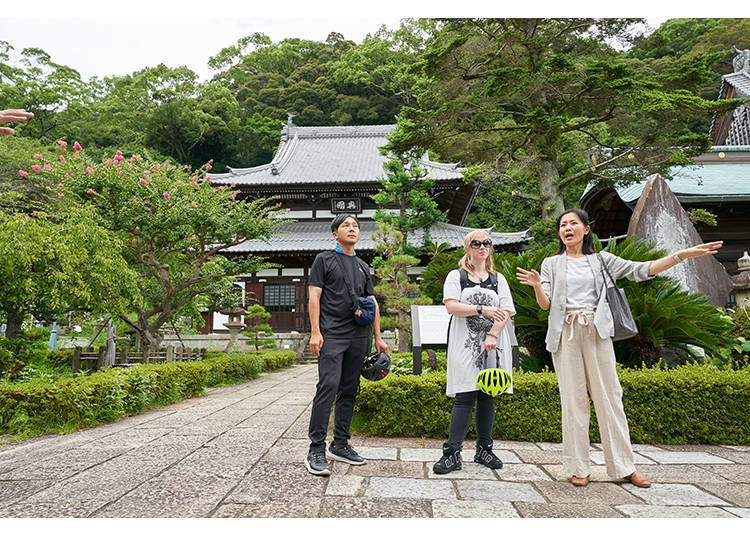
Seikenji houses many important cultural assets, including the temple bell, the main gate, and various paintings and calligraphic artwork. The temple garden is designated a national Place of Scenic Beauty and is graced with a reclining-dragon plum tree said to have been grafted by Ieyasu himself.

High above Shizuoka City, the temple in centuries past offered stunning views of its lush green surroundings, the bay area, and the mountains in the distance. Even though the city’s modern buildings now detract from this view, it is still possible to imagine the tranquility of this place five hundred years ago.
-
Seikenji Temple清見寺
- Address 418-1 Okitsuseikenji-cho, Shimizu Ward, Shizuoka, 424-0206
- Phone Number 054-369-0028
Okitsu Zagyoso Memorial Museum: A Meiji-Style Beach House Owned by a Former Prime Minister
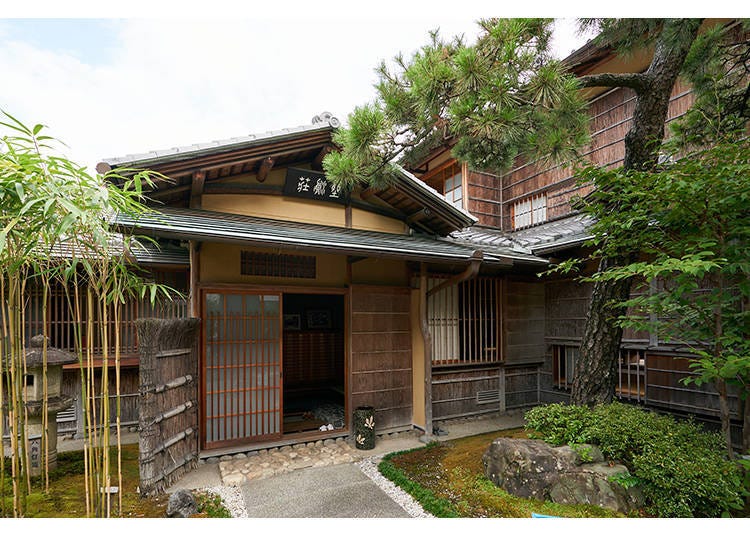
Located just 10 minutes away by bike from Seikenji is the Okitsu Zagyoso Memorial Museum. It is a recreation of a beach house built on this site that was owned by Saionji Kinmochi, who served as Prime Minister of Japan from 1906 to 1908 and 1911 to 1912.
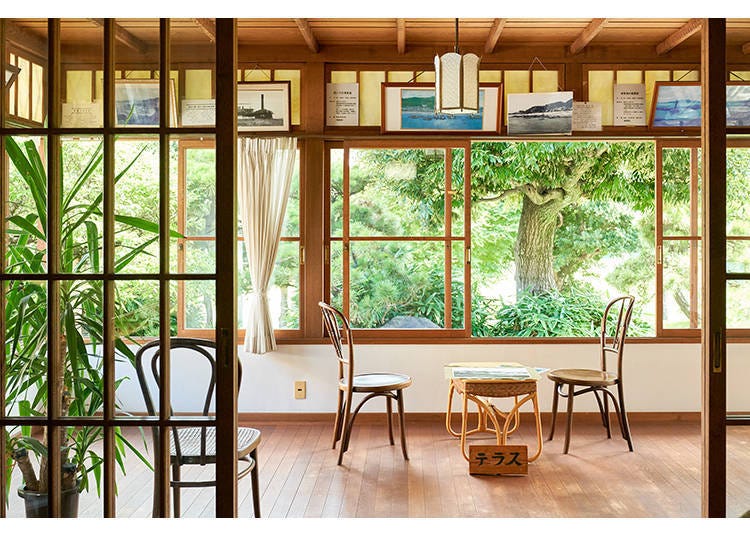
The house was built in the architectural style sukiya-zukuri, which was the prominent style in Kyoto during the period. It is characterized by its use of all-natural materials, mainly wood, and it is a style that was usually used for teahouses, not for residences.
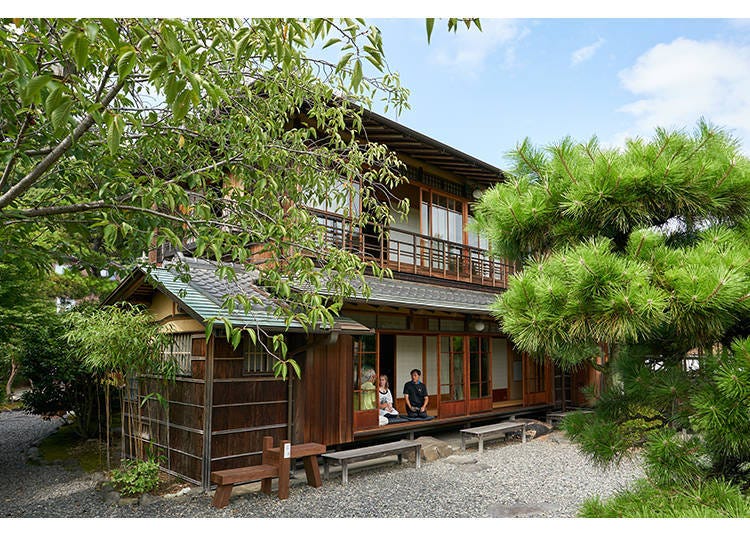
Although Okitsu Zagyoso was initially intended as a beach house, Saionji Kinmochi loved the house so much that he later made it his main residence. It was here in the original house that he passed away at the age of ninety. The remains of the original house are displayed in Meiji Mura (“Meiji Village”), an open-air museum in Inuyama City, Aichi Prefecture.
-
Okitsu Zagyoso Memorial Museum興津坐漁荘記念館
- Address 115 Okitsuseikenji-cho, Shimizu Ward, Shizuoka, 424-0206
- Phone Number 054-369-2221
Kanebun-no-Chaen: A Breathtaking View of Mount Fuji and the Perfect Cup of Green Tea
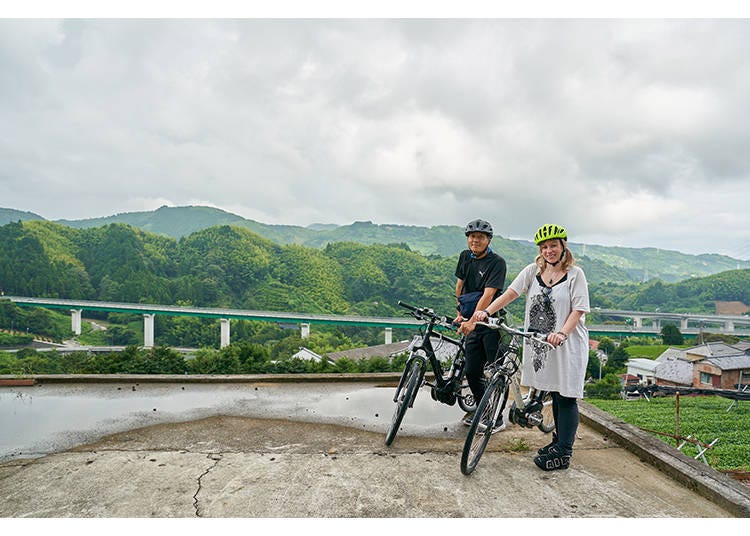
In less than an hour, we were at our next stop, Kanebun-no-Chaen, a teahouse and tea plantation tucked away in the mountainous part of Shizuoka. Its tea garden offers a gorgeous view of Mount Fuji, and in the morning, you might be able to witness the “sea of clouds,” where clouds close to the ground can be seen from above, moving like waves on the sea.

The green tea from this garden is harvested and processed by hand every spring. There are several ways to prepare the tea, which can affect its quality and taste.
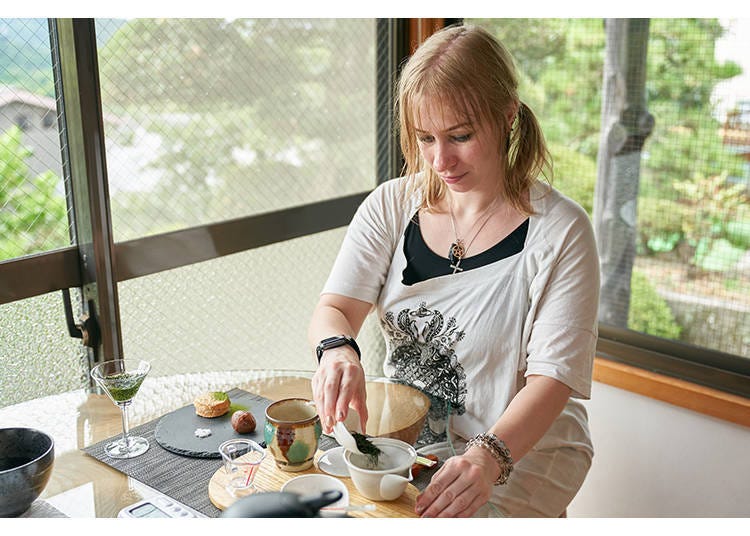
In Kanebun-no-Chaen’s teahouse, visitors can learn firsthand how different water temperatures affect the taste of the tea. If the temperature is higher, the flavor will be bitter and intense; if it’s lower, the flavor will be mild and complex.
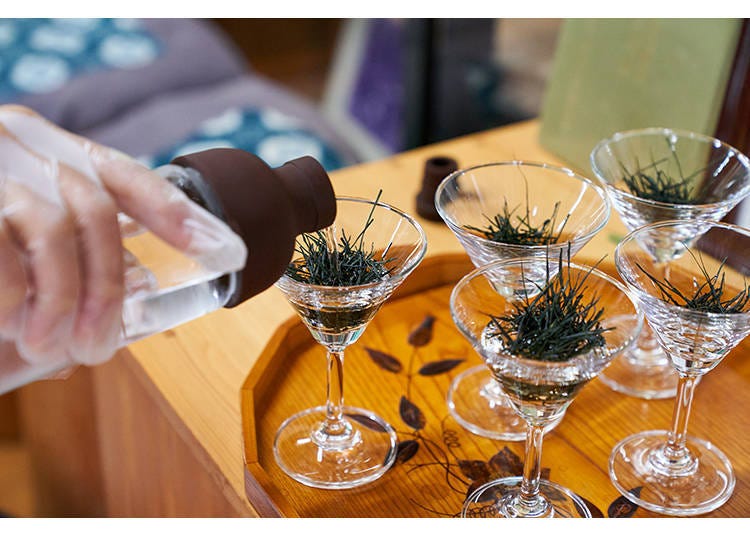
The flavor profile of Shizuoka’s mountain-grown tea is truly one of a kind. The tea lesson itself is accompanied by tea-flavored sweets, and some of the tea leaves can be eaten at the end of the lesson.
-
Kanebun-no-Chaeおかかえ茶園かねぶん
- Address 979 Yoshiwara, Shimizu Ward, Shizuoka, 424-0111
- Phone Number 054-368-1913
Angenzan Ichijoji: A Temple Where You Can Laugh, Learn, Relax, and Stay Overnight
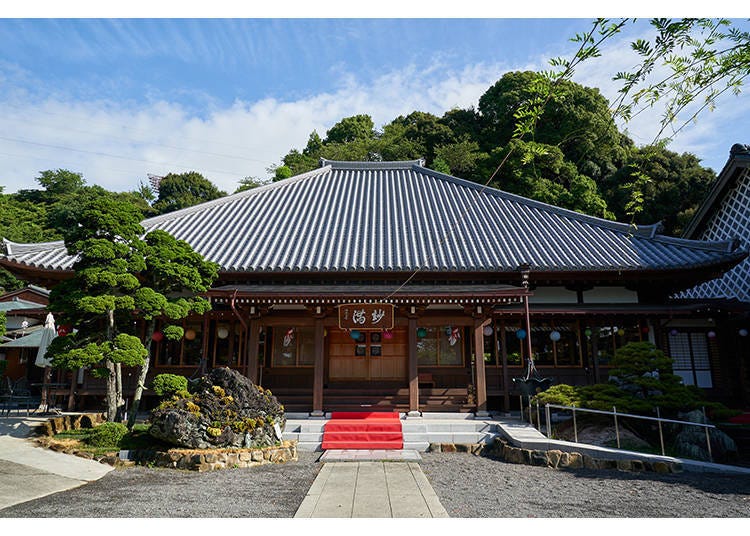
Angenzan Ichijoji Temple is a Soto Zen temple that dates back about six hundred years, but all of its halls have been renovated and are in immaculate condition. The current plan is to make the living quarters of the temple available for visitors to stay overnight.
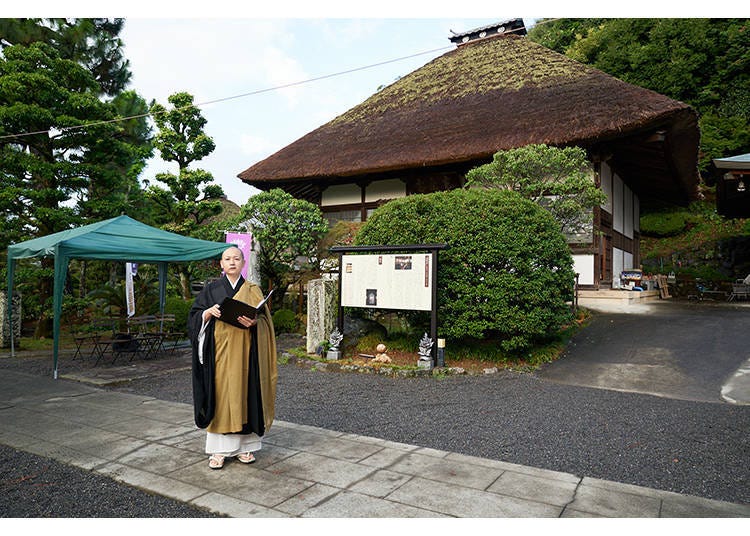
The chief priest of Ichijoji is passionate about creating a pleasant, relaxing atmosphere for his guests and the people of his community. The temple is open to everyone, no matter their beliefs.
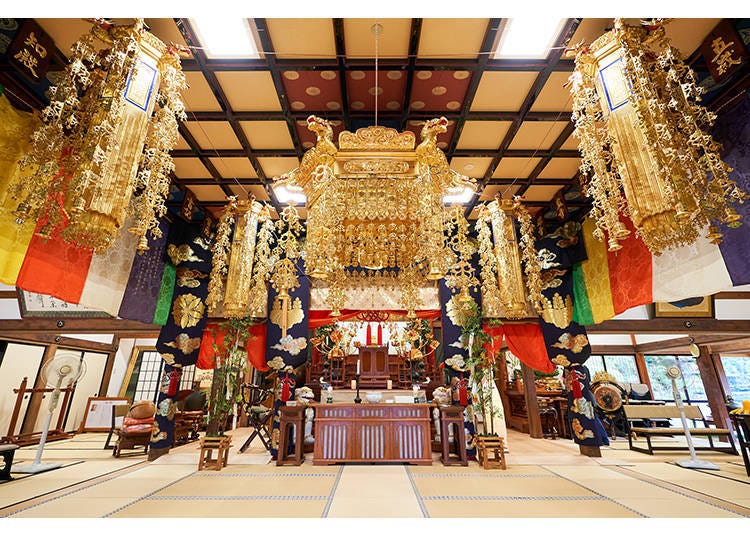
The main prayer hall has a book corner, free drinks, and a drawing corner, since drawing is one of the priest’s passions. Small anime figures and comic drawings of the chief priest can be found all over the hall, reflecting his bright and welcoming spirit.
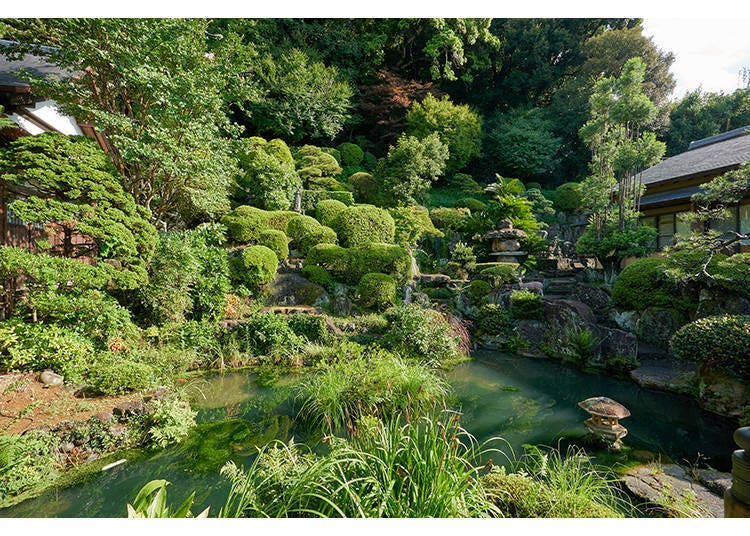
The simple tatami rooms have futons for sleeping and minimalist decor. The floor-length windows of the hall look out on a lovely Zen garden.
Shojin Ryori Todoroki: Five-Star Vegetarian Cuisine That Follows Buddhist Teachings

Dinner and breakfast include delightful dishes from the restaurant Shojin Ryori Todoroki. The chef of Todoroki is a Buddhist monk who uses his extensive cooking experience and knowledge of the human body to make a multicourse shojin ryori, which is a true delight for all the senses.
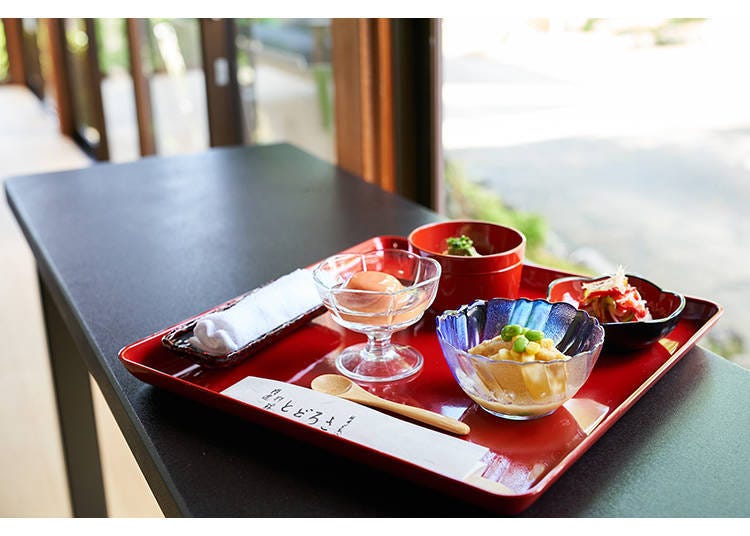
Shojin ryori is a meal prepared according to Buddhist beliefs. It usually follows the rule of five in traditional Japanese cooking: five tastes, five senses, five colors, and five methods.
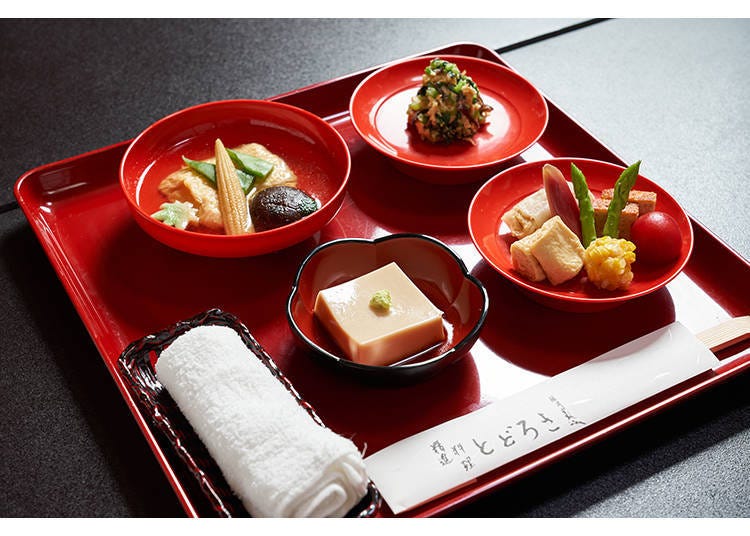
Shojin ryori is a vegetarian, often vegan, meal and therefore includes no fish or meat. It is made with only plant-based ingredients, such as vegetables and tofu.
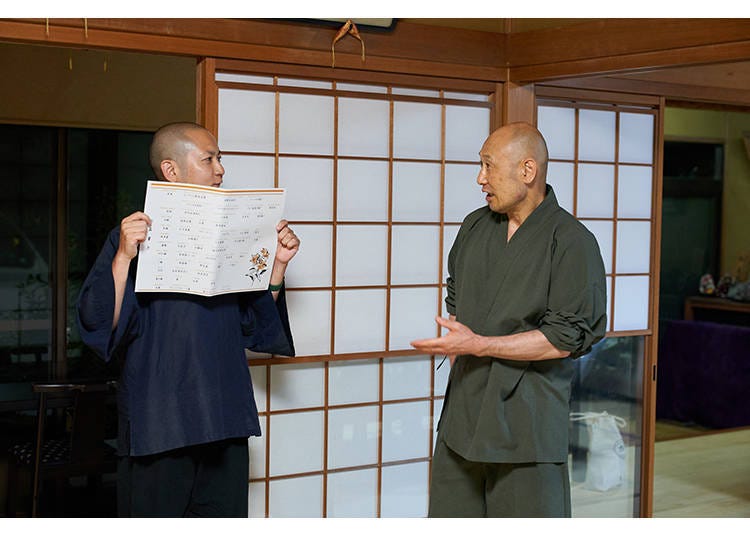
Shojin Ryori Todoroki usually serves food at Zenpukuji Temple in Shizuoka City. The chef is well respected among shojin ryori chefs because of his unique approach.

Every dish in the multicourse meal is made with handpicked, seasonal ingredients. The dishes are well-planned, flavorful, and original.
Angenzan Ichijoji Temple Activities: Projection-Mapping, Zazen, and Onoresho Calligraphy
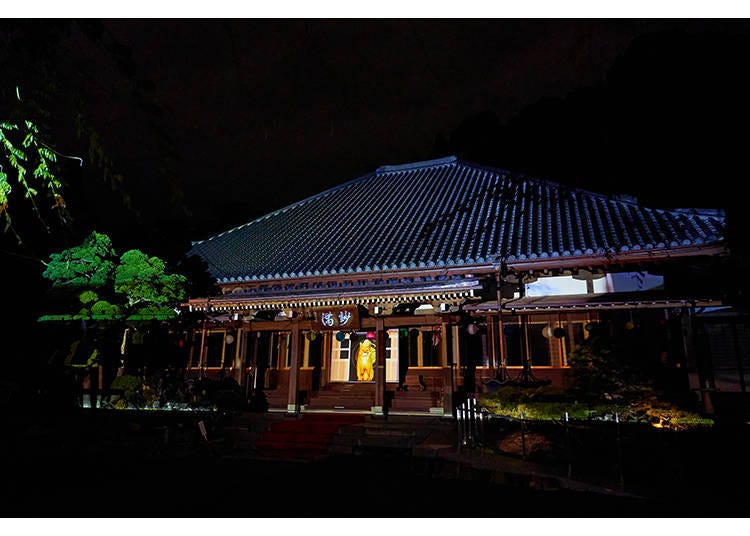
In an effort to bring more joy and peace into people's lives, Ichijoji Temple is offering more and more activities. The latest is a projection-mapping night show where an adorable anime fox runs through the halls of the temple.
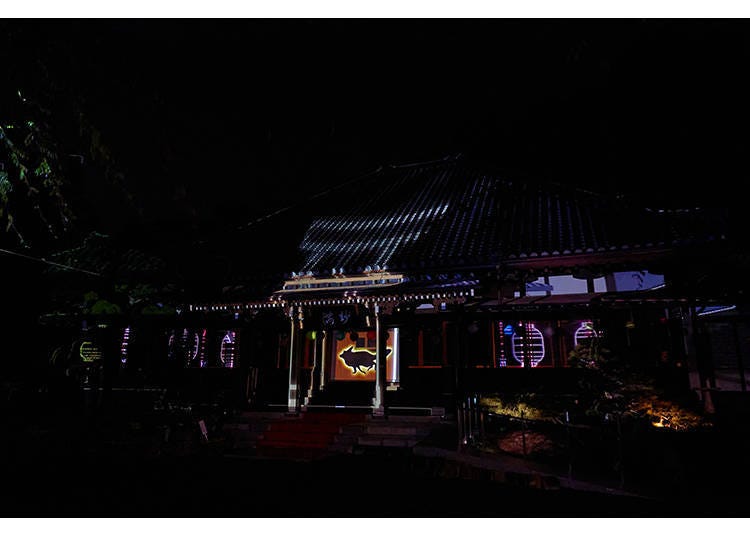
The fox is featured prominently in Ichijoji Temple’s legends. One of these concerns a fox that continually pesters the priests by stealing offerings and playing general havoc. One day, a former chief priest captured the fox in order to punish him. The animal was not hurt, but it was so frightened that it refrained from acts of mischief from then on.
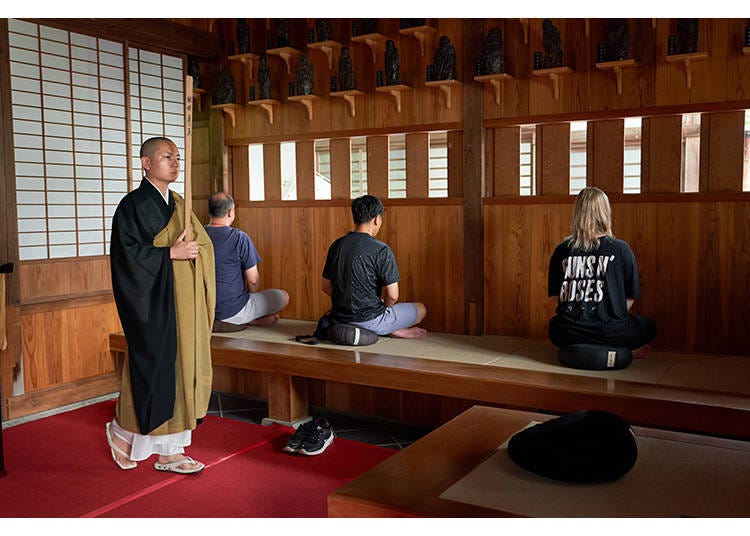
In the mornings, visitors can participate in zazen, an important Buddhist meditative discipline. During zazen, the disciple remains seated in a perfectly still position and frees the mind of all thoughts and worldly concerns with the goal of reaching a Zen state.
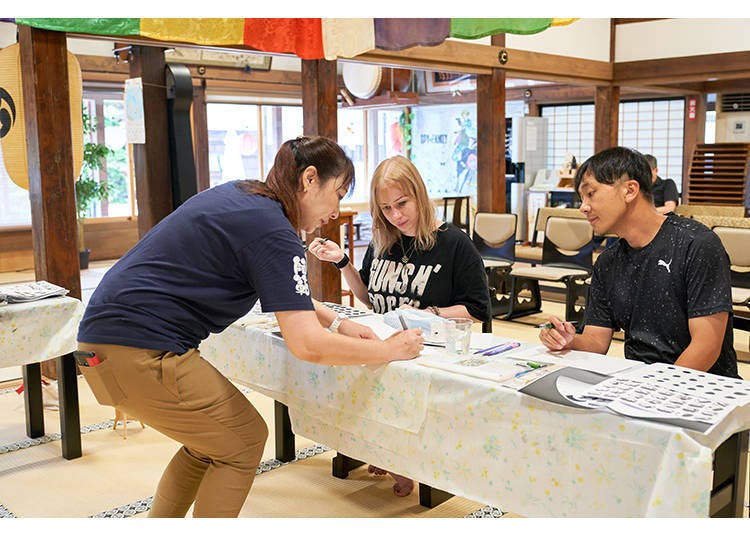
We ended our stay with a lesson in onoresho calligraphy taught by the Nippon Onoresho Dojo. Onoresho is a free-thinking style of calligraphy that is a kind of meditative painting of words. Everyone can develop their own style while copying the calligraphy on the examples provided, so visitors do not have to be able to read or write Japanese.
-
Ichijoji庵原山一乗寺
- Address 937 Ihara-cho, Shimizu Ward, Shizuoka, 424-0114
- Phone Number 054-366-0182
Hotel Quest Shimizu’s Surugawa Restaurant: A Full-Course Meal That Is Good for Your Body
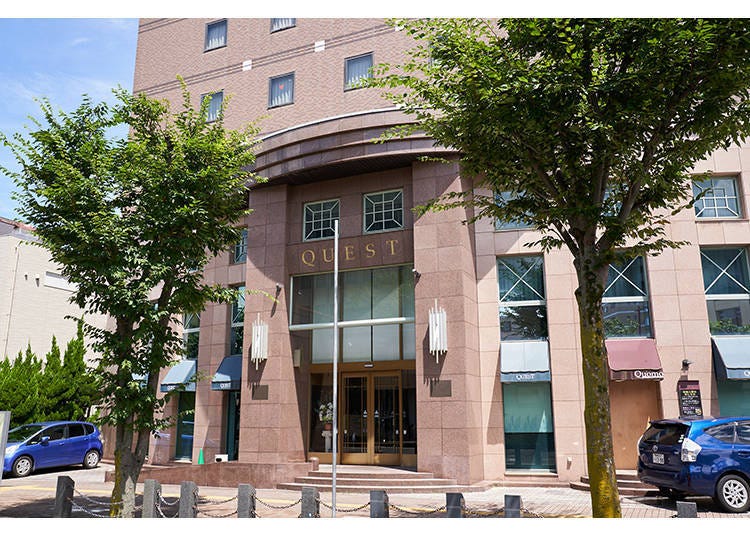
For lunch, we biked on over to the Hotel Quest Shimizu in around 40 minutes. The restaurant here specializes in full-course meals that are made with local ingredients and are low in calories, carbohydrates, and salt—but not in flavor.

This meal is not vegetarian, but it does embrace the full variety of flavors this port city has to offer. Local vegetables, fish, meat, and the area’s famous sakura shrimp all had a place in the different courses.
-

-
Address
3-27 Masagocho, Shimizu-ku, Shizuoka-shi, Shizuoka, 424-0816
View Map -
Nearest Station
Shimizu Station (JR Tokaido Main Line)
2 minutes on foot
-
Address
3-27 Masagocho, Shimizu-ku, Shizuoka-shi, Shizuoka, 424-0816
Miho-no-Matsubara: A Beautiful Pine Grove with a Mount Fuji View
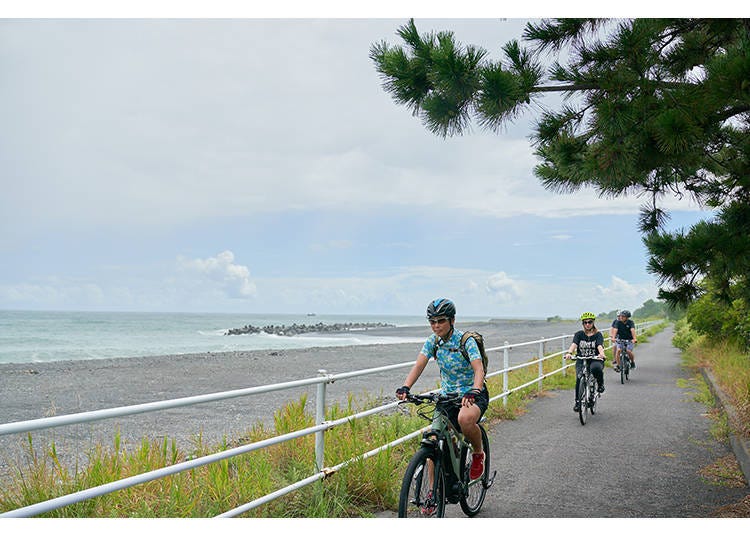
Lastly, we finish our tour in Miho-no-Matsubara, or the pine grove of the Miho Shrine. It has been designated as one of the three most beautiful pine groves in Japan.
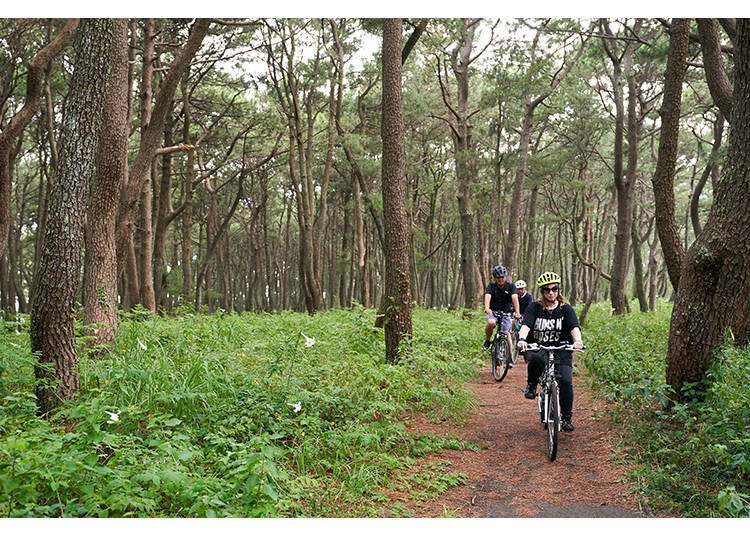

Miho-no-Matsubara is a famous spot for capturing a clear view of Mount Fuji. The lush green pine forest and the sparkling blue ocean together create the perfect frame for a picture of the famous mountain.
-
Miho-no-Matsubara三保松原
- Address 1338-45 Miho, Shimizu Ward, Shizuoka, 424-0901
- Phone Number 054-340-2100
Explore the Historical Side of Japan in Shizuoka
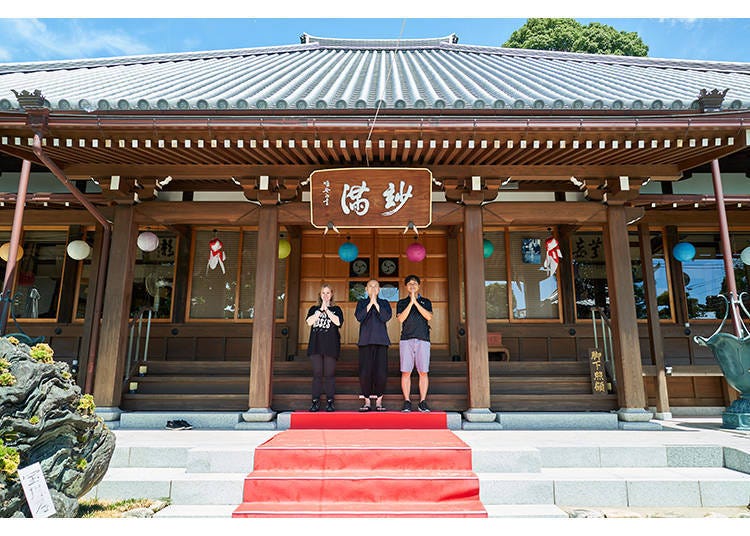
Shizuoka has a rich and fascinating history that is often overlooked. It is a great place to learn about traditional Japan without having to battle large crowds of tourists.
- Area
- Category
*Prices and options mentioned are subject to change.
*Unless stated otherwise, all prices include tax.
Popular Tours & Activitiess
-

[Extended Offer!](12% OFF KKday Coupon) Mt. Fuji Autumn Leaves, Powder Snow & More! 15 Best Tours to Experience Japan in Fall & Winter
-

New Seibu L00 Series Launching in 2026! What to See Along the Tokyo-Area Golden Route
by: Guest Contributor
-

The Best Japanese Food Representing 2025! 'Dish of the Year®' Annual Award Results Announced
-

Tokyo City Pass Upgrade: Harry Potter Studio Tour & Top Sights up to 85% Off
by: Guest Contributor
-

Simply Oishii Wagashi School Discover Japanese Culture Through Wagashi: A Hands-On Experience!
by: Guest Contributor
-

Strawberries, Style, and Tokyo’s Coolest Neighborhood: Winter Afternoon Tea in Kichijoji
by: Guest Contributor
Inspiration for Accommodations
-

Enjoy Mt. Fuji from the Comfort of Your Room! Recommended Ryokan with Mt. Fuji View
-

Stay Near the Cherry Blossoms! Hotels for Cherry Blossom Viewing in Tokyo
-

Family-Friendly Hotels with Free Shuttle to Disneyland: Convenient Access for a Magical Stay
-

Top Ranked Hakone Hotels with Mt. Fuji View: Enjoy Stunning Scenery from Your Private Space
-

Convenient Tokyo Hotels with Airport Shuttle: Ideal for Families and Heavy Luggage
-

Stunning Tokyo Tower View Hotels: Enjoy Spectacular Scenery from Your Private Space
-

Convenient Asakusa Hotels with Kitchens: Ideal for Extended Family Visits
-

Experience Luxury: Hakone's 10 Best Five-Star Accommodations
-

Enjoy Mt. Fuji Autumn Leaves! Top Hotels Near the Popular Autumn Leaves Corridor
-

Experience Hakone Fall Foliage from Your Room with Stunning Views
-

What to Do in Tokyo For a Day: 8 Must-Visit Spots from Asakusa to Roppongi
-

16 Secrets About Mt. Fuji, the Symbol of Japan: Even Japanese People Don’t Know That?!
-

The Complete Guide to Tokyo Station
-

Your Trip to Akihabara: Tokyo's Geek Paradise (Activities, Hotels, Savers & More)
by: Himanshi Shah
-

The Story of Akihabara: How Tokyo’s Geek District Came to Be
-

Tokyo Train Map: Your Essential Guide to Subways and Railways
- #best ramen tokyo
- #what to buy in ameyoko
- #what to bring to japan
- #new years in tokyo
- #best izakaya shinjuku
- #things to do tokyo
- #japanese nail trends
- #what to do in odaiba
- #onsen tattoo friendly tokyo
- #daiso
- #best sushi ginza
- #japanese convenience store snacks
- #best yakiniku shibuya
- #japanese fashion culture
- #best japanese soft drinks












